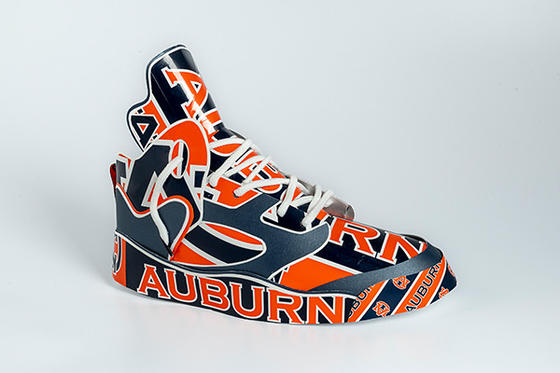In This Story

The Hansa Carrier accident caught the attention of Oceanographer Curtis Ebbesmeyer in May of 1990. Using the sneakers’ unique serial numbers, his research team gathered data from beachcombers who discovered shoes washing ashore through 1992. The information revealed seasonal current changes off the western coast of North America—and even data reflecting that shoes traveled in different directions than the mates.
To tell the story, Yoder selected the Air Jordan 5 design because of its immense popularity in 1990.
“Beyond the visual wow and the pop culture references, the exhibition examines outsourcing, brand loyalty, commercialism, and our complex relationships with stuff contrasted with the finite space of our planet,” said Cindi Malinick, executive director of the museum. “Yoder’s work and its back story layer the humanities and sciences, making it an ideal investigation across disciplines. It’s relatable.”
Department of English students used the objects to discuss “Sneakerhead” culture, with additional instructional opportunities for all faculty coordinated by Chris Molinski, director of education, engagement, and learning at the museum.
Malinick added that touring the exhibition is possible for the museum’s 20th Anniversary in 2023. Admission is free for the museum, which will reopen to the public with a new array of exhibitions on Aug. 23.
Located on Auburn’s campus, the Jule Collins Smith Museum of Fine Art is the cultural heart of an Alabama public research institution serving students, faculty, and the Southeast. The university art collection includes mid-20th century American modernism, Mexican modernism, contemporary prints, and photographs, works on paper depicting the South, ceramics, and Southern visionary art. For more, visit www.jcsm.auburn.edu.
